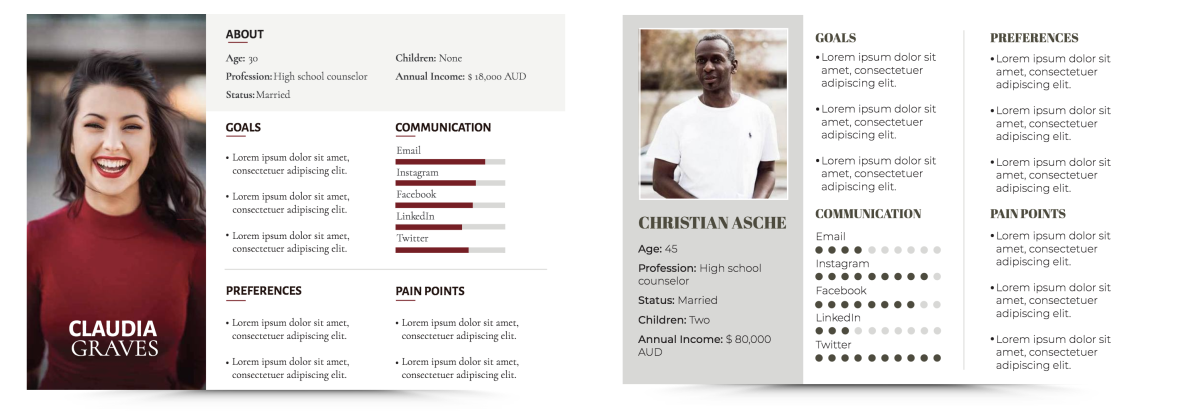How To Build Your Business’ Content Strategy
This template has all the elements you’ll need to start researching and writing your content strategy. It is vital to produce engaging content at a high-quality standard with intent. Get ahead of your competitors and build effective strategies with less effort. In doing so, you conserve your time and stay on track to boost ratings.
1) Core Goals Framework:
Core values are essential in defining what your company stands for.
First of all, begin with an outline to break down your content strategy into manageable steps and answer the following questions.
- Brand: What response does your brand currently perceive to the general public? What message does it send out? What current content is/is not generating the most traffic?
- Goals: What do you want to achieve through your brand? For example: Do you want to build brand awareness? Create an emotional connection with your consumers?
- Setting: Are you online or do you have a physical location? How does this affect content opportunities?
- Competitors: Who have you identified as competitors? Give a brief overview of what they are doing well and poorly.
2) Key Performance Indicators (KPIs)
Secondly, establish KPIs to set your goals into metrics that you can measure and put into a time frame.
Examples:
-
- Hourly, daily, weekly, monthly, quarterly, and annual sales
- Hours of Resources Spent on Sales Follow Up
- Average Time for Conversion
- Customer lifetime value
- Customer turnover rate
- Inbound/Outbound calls handled per representative
- Overdue project tasks / crossed deadlines
- Retention rate
- Rank increase of target keywords
- Conversion rate for social media leads
3) Target Audience
A content strategy is most effective when you know your target audience. The best way to achieve your goals is to determine what content strategy is the most appropriate at any given time for the type of people you are targeting. Remember, quality content helps brand recognition and encourages consumers to engage more personally with the company or individual.
Test these options:
- Conduct persona research
- Interview or survey
- Check what sites your audience are already visiting
- Observe content they engage with
- View social media platforms they share content on predominantly
- Look at their average time on page, bounce rate and page views

4) Keywords: Trends & Analytics
Define keywords for topics that your audience cares about. Use tools such as Google Analytics and SemRush. Will the chosen keyword for your content help your audience find it precisely when they need it?
Above all:
- Create content that focuses on a specific search query that you know will be trending
- Know when to expect drops in search query volume
- Strategically leverage a surge in search activity
Simply use a Keyword Spreadsheet and organize variables with the sections: Topic, Keyword, Volume, Long Tail.
Most noteworthy: A highly competitive keyword should not be focused on exclusively. A longer-tail keyword is something to consider as a good content strategy. It’s not about taking traffic from your competitors’ websites, it’s about finding keywords no one has considered yet.
5) Content Type: Distribution Channels
First, list the channels you use. Then ask yourself, what kind of content does your audience consume? Likewise, having an Essential Guide To Visual Social Media Marketing will help you understand what type of content to create.
Some examples include:
- How-To Guides, Case Studies, or Portfolio Pieces
- Opinion Pieces, Guest Posts, or Guest Blogging
- Photos, Infographics
- Videos, Webinars
- eBooks or other free resources
6) Planning Calendar
Maintaining a planning calendar allows you to plan ahead, avoid multitasking, and note down all your creative ideas for later. Some tools, such as SemRush and Facebook Creator Studio, and social media management tools allow you to schedule social media posts ahead of time.
For example:
April: Publish content on par to your top 10 pieces of content.
May: Publish content in similar success to your top 7 pieces of content.
June: Publish content as successful as your top 5 pieces of content.
Question: How often will you be creating new content?
7) Publishing Procedures
Create a checklist template to perform before you publish your content. Certainly include the following:
- Compelling post title + URL match
- Call-to-action at the end
- Assign Alt Text to any image inserts (recommended for SEO)
- Optimize social share language and images
- Compelling meta description and title
- Use keywords
8) Optimization
Evaluate how your content performs gathering data. Use this to make great business decisions and improve your strategy. Look at:
- Exit and entrance rates
- Time on site / time on page
- Bounce rates
- Conversion rates / transaction percentages
- Evaluate Page Load Times
Start Planning Your Best Content Marketing Strategy
Finally, you are ready to start building your high-level content strategy and know exactly what to create in advance. Make sure you include contact information for anyone who may have questions about the strategy that you’ve created.
To begin thinking about your content strategy, please answer the following questions in the comments:
Why are you creating content?
Who are you helping, and how can you help if no one else can?








Hi, Audrey,
Understanding the user’s persona, search intent, and their language is key to effective content strategies. Keyword research will help greatly to uncover most of these steps and to tailor your content to the most relevant audience.
Thanks, Audrey, nice read.